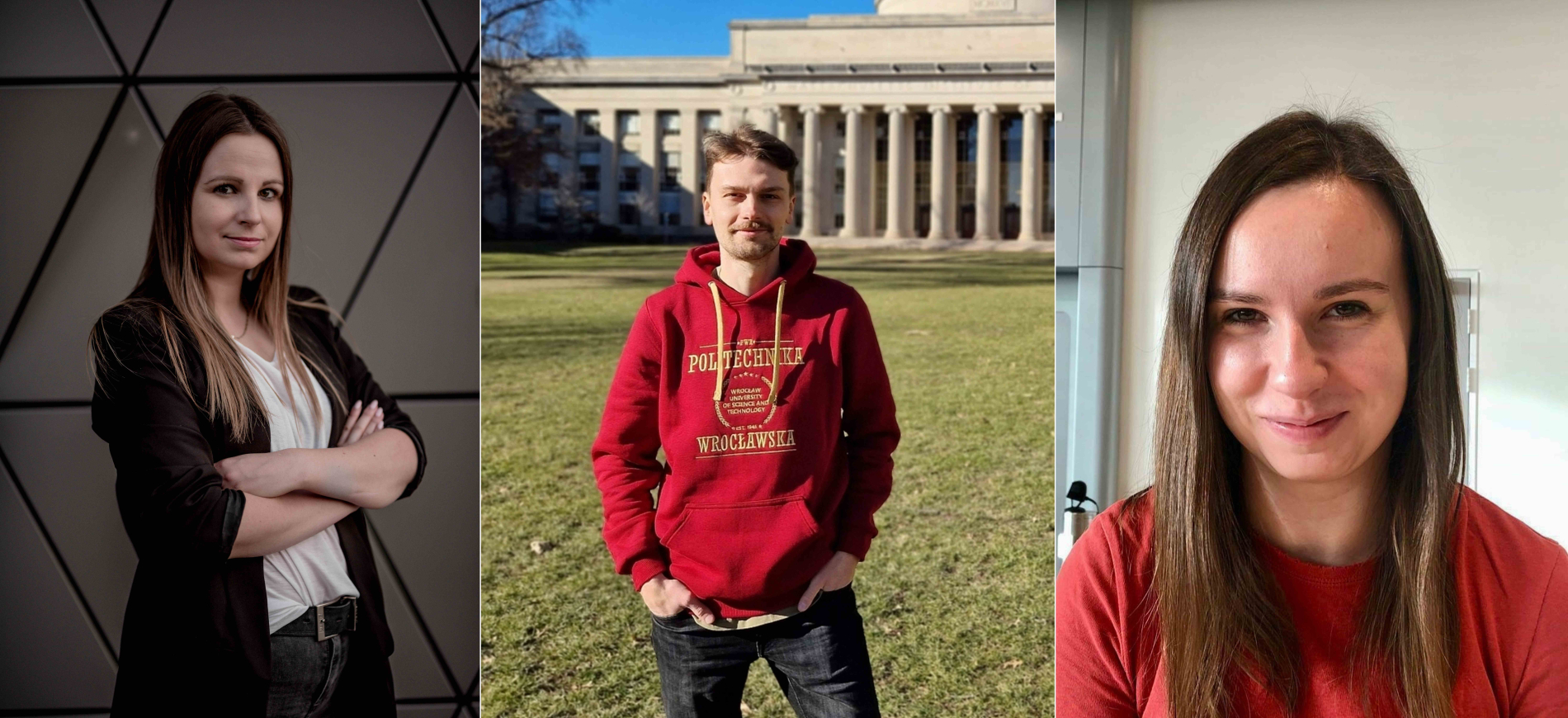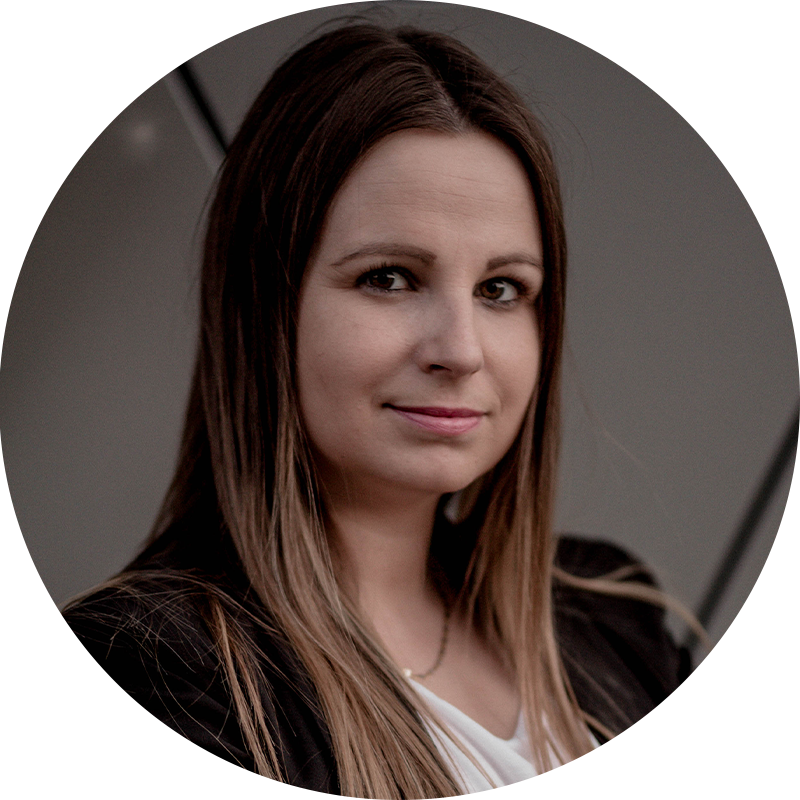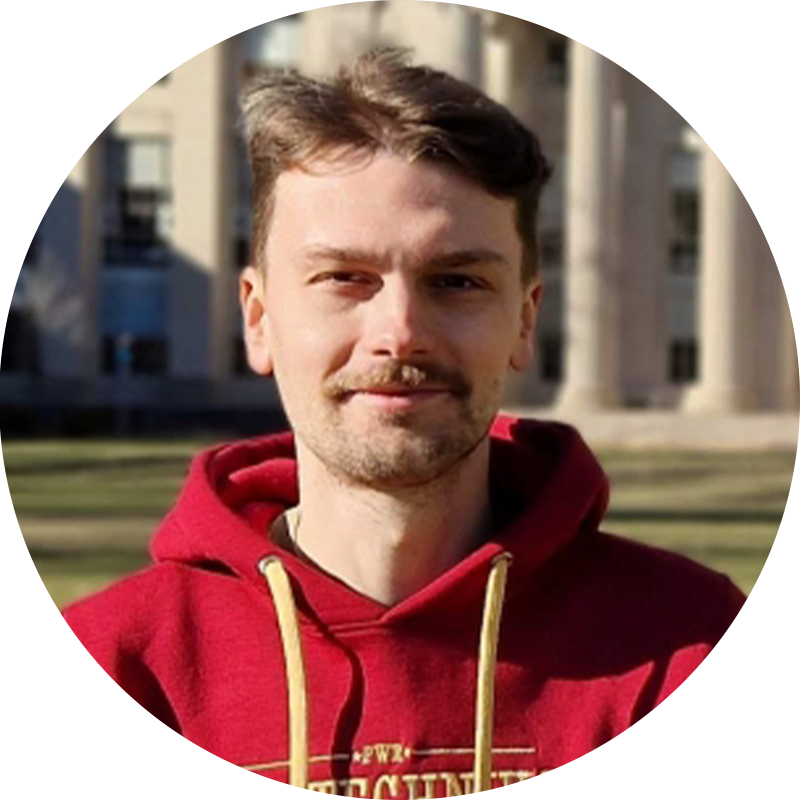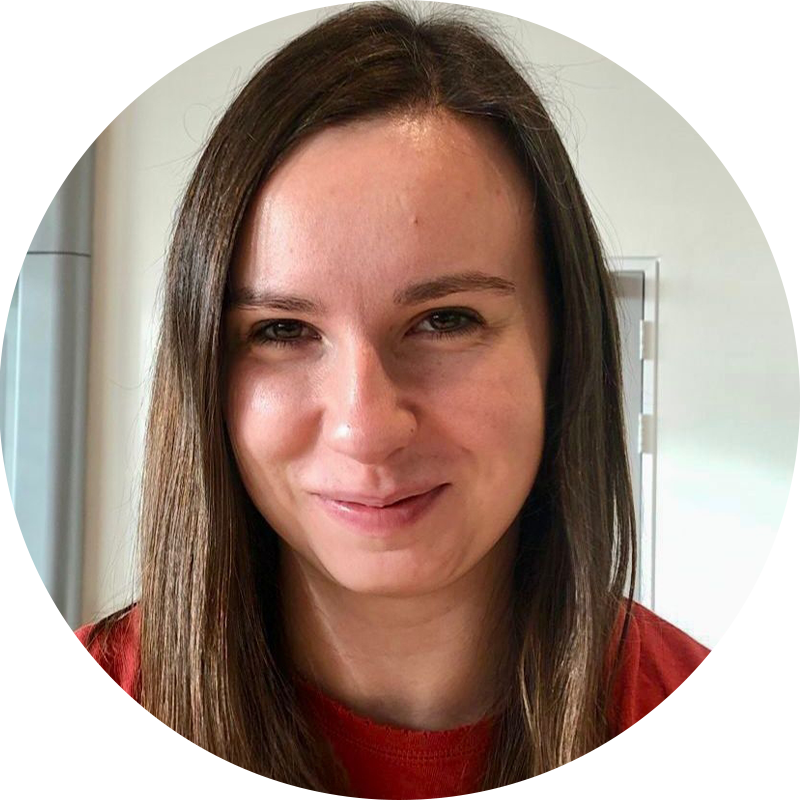YOUR BROWSER IS OUT-OF-DATE.
We have detected that you are using an outdated browser. Our service may not work properly for you. We recommend upgrading or switching to another browser.
Date: 13.03.2023 Category: international cooperation, science/research/innovation

The Polish National Agency For Academic Exchange (Narodowa Agencja Wymiany Akademickiej – NAWA) has announced this year's Mieczysław Bekker Scholarship Programme results. The winners include three scientists from Wrocław University of Science and Technology, who will carry out scientific projects and postdoctoral placements at universities in Switzerland, France, and the UK.
This year's edition attracted 355 candidates from all over Poland. 77 of them were selected for the scholarship programmes, allowing them to carry out their projects in 18 countries. Funding for a research placement in a renowned foreign centre was awarded to three of our researchers: Paulina Peksa, PhD, Eng. (Faculty of Fundamental Problems of Technology), Konrad Gruber, PhD, Eng. (Faculty of Mechanical Engineering), and Justyna Rogacka, PhD, Eng. (Faculty of Chemistry).
The Bekker Programme supports the international mobility of doctoral students, researchers, and academics in their pursuit of scientific excellence by providing them with opportunities for development at research and academic centres around the world. The host units are scientific or academic centres located in different parts of the world.
During their stays, lasting between three and 24 months, the fellows will carry out research projects or postdoctoral placements in collaboration with foreign researchers while contributing to the growth of international cooperation.
 She will travel to the National Laboratory of High Magnetic Fields in Toulouse (Le Laboratoire National des Champs Magnétiques Intenses – LNCMI). From October onwards, she will be carrying out a project at the facility, entitled “Novel low-dimensional perovskite structures as white light emitters”, under the supervision of Prof. Paulina Płochocka-Maude.
She will travel to the National Laboratory of High Magnetic Fields in Toulouse (Le Laboratoire National des Champs Magnétiques Intenses – LNCMI). From October onwards, she will be carrying out a project at the facility, entitled “Novel low-dimensional perovskite structures as white light emitters”, under the supervision of Prof. Paulina Płochocka-Maude.
Generating white broadband light with the use of red-green-blue emitters is a major challenge faced by optical spectroscopy physicists. The incorporation of large organic molecules into the skeleton of 3D perovskites results in new properties, in particular high photoluminescence quantum yield and broadband emission. These properties make these structures perfect for white light-emitting applications. Recent studies indicate that the emission is due to distortion of the organic skeleton, which is conducive to the generation of STE (exciton self-trapping). Nevertheless, the properties of these excitons remain a mystery.
“My goal will be to answer questions related to the physical properties of these structures – in particular to determine the nature of the emission as well as the binding energy and effective mass of the exciton,” explains Dr Paulina Peksa.
The Toulouse laboratory specialises in generating pulsed magnetic fields of up to 200T. It is the only centre in Europe with an infrastructure that allows measurements in such high magnetic fields, thus enabling the observation of exciton phenomena and the unambiguous determination of the exciton binding energy in the materials being researched.
During her stay in France, the W11 u researcher will conduct optical spectroscopy studies in high magnetic fields of new perovskite-like materials as white light emitters. “I find it important to understand the nature of the emission of these materials, so what has a particular meaning here is the opportunity to work with people who are experts as far as studying semiconductors in high magnetic fields goes,” says the researcher. “I hope that together we will obtain such results, which will help us find new applications for perovskite-like structures and answer several fundamental questions,” – she adds.
In her research work at Wroclaw Tech, Paulina Peksa, PhD, Eng. focuses mainly on understanding the physicochemical properties of metal-organic structures that belong to the formate family. She has been concerned with describing and determining phase transitions with a focus on calorimetric and dielectric properties. “For an instant, however, I find it very difficult to detach myself from the subject matter related to my project, and exploring these interesting structures has become my main scientific interest,” explains Dr Peksa.
 He will carry out his placement at (Paul Scherrer Institute, PSI) in Switzerland. It is the country's largest life sciences and engineering research centre, where world-class large-scale research facilities and specialised apparatus are designed, developed, and constructed.
He will carry out his placement at (Paul Scherrer Institute, PSI) in Switzerland. It is the country's largest life sciences and engineering research centre, where world-class large-scale research facilities and specialised apparatus are designed, developed, and constructed.
There, he will conduct research as part of the project entitled ‘Understanding the effects of carbides and twinned boundaries on the micro-mechanical properties of incrementally manufactured and heat-treated nickel-based super alloy’. “My work will consist in micro-mechanical loading of incrementally manufactured (3D printed) Inconel 718 alloy and its derivatives – i.e. Inconel 718 with micro-additives,” explains Dr Konrad Gruber. “Their function is to bring about grain fragmentation and reduce the proportion of twin boundaries in the alloy after full heat treatment.”
The testing will be carried out in situ, i.e. the material will be subjected to treatment including neutron diffraction or acoustic emission measurements while the strength test is being performed. The W10 researcher also plans to perform stress tests in a scanning electron microscope chamber equipped with an EBSD detector. Its objective is to determine the role of micro-additives and twinned boundaries in the Inconel 718 alloy the incremental manufacturing and full heat treatment have been performed.
“This will allow the development of a grain grinding method for incrementally manufactured nickel- based superalloys (such as Inconel 718). It’s important for me to improve their mechanical and performance-related properties and use the developed method for the production of aerospace parts,” explains Dr Gruber.
His research work at Wroclaw Tech focuses on examining the relationships between incremental manufacturing processes and the structure and properties of the materials being processed. “My main areas of interest are LPBF – the Laser Powder Bed Fusion method, nickel alloys, and aerospace applications,” adds the W10 researcher.
 She will spend 24 months on a research placement at the University of Manchester in the UK as a member of an international team led by Prof. Sihai Yang and Prof. Martin Schröeder, concerned with materials chemistry, particularly the design, synthesis, and research into porous metal-organic materials (MOFs) with energy and environmental applications in mind. The group has access to extensive research facilities oriented towards the synthesis and characterisation of porous materials of various types.
She will spend 24 months on a research placement at the University of Manchester in the UK as a member of an international team led by Prof. Sihai Yang and Prof. Martin Schröeder, concerned with materials chemistry, particularly the design, synthesis, and research into porous metal-organic materials (MOFs) with energy and environmental applications in mind. The group has access to extensive research facilities oriented towards the synthesis and characterisation of porous materials of various types.
“My placement as part of this internationally recognised team will allow me to perform research under the guidance of outstanding specialists and scientists, develop numerical modelling skills, and acquire knowledge in the areas of synthesis, various types of cutting edge equipment for material characterisation and adsorption,” explains Dr Rogacka.
The W3 researcher will conduct advanced research into MOFs used for the adsorptive capture of air pollutants. She aims to investigate these materials for their use in the area of storing and capturing air pollutants. “My project focuses on solving the problem of separation and storage of toxic gases present in the air, such as NOx, SOx, NH3, VOCs, and PAHs by using new materials,” says Dr Rogacka. “I will use computational large-scale screening analysis in combination with experimental techniques to identify the most efficient MOF – toxic gas pairs.”
Dr Justyna Rogacka’s scientific activities involve studies of adsorption-based gas storage and separation processes using nanoporous materials, i.e. activated carbons and MOFs, in the fields of environmental protection and energy.
Our site uses cookies. By continuing to browse the site you agree to our use of cookies in accordance with current browser settings. You can change at any time.